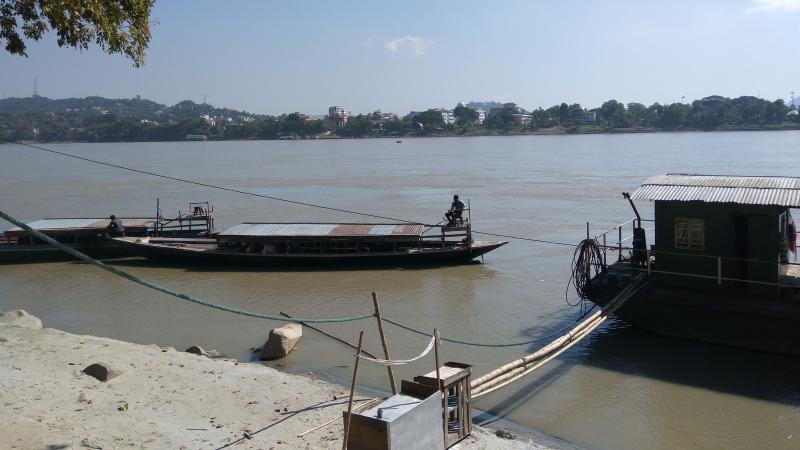
A recent study by researchers from the Department of Environmental Science, Tezpur University, Assam, and the Department of Earth Sciences, Indian Institute of Technology Gandhinagar, Gujarat on the groundwater in the Brahmaputra floodplains has revealed some alarming information. The study has detected the presence of arsenic, uranium and fluorides (compounds of the element fluorine) that can affect the wellbeing of the people in this region.
Arsenic and fluorides are naturally present in the groundwater in several countries across the world. In India, arsenic is found in the groundwater in West Bengal, Assam and other North Eastern states; fluorides in Andhra Pradesh, Rajasthan, Gujarat and Assam; and uranium in Andhra Pradesh, Jharkhand and Meghalaya. However, this study is the first to measure the co-occurrence of these elements in groundwater in the Brahmaputra floodplains.
The Brahmaputra floodplain has high deposits of alluvium -- material deposited by the river water. Alluvium sediments, rich in minerals, make the low-lying areas close to the banks of the Brahmaputra river very fertile. People living in the state of Assam depend on these regions for agriculture and survival. The researchers carried out a health risk analysis to understand how the exposure to these toxic substances could affect the local people.
There is an absence of data on the state of uranium contamination in the Brahmaputra floodplains and its detection in groundwater could present a more significant threat to the people who inhabit this area, say the authors, in their study published in the journal Chemosphere.
The researchers collected groundwater samples from tube-wells for two years between 2011 and 2012. They also analysed the sediment samples on the floodplain. Using a scanning electron microscope, they determined the the elements present in these samples. They followed guidelines from the USEPA (US Environmental Protection Agency) to carry out a preliminary health risk analysis to determine the risk of cancer and other diseases among people who depend on the drinking water from these areas.
The results of the study showed that most of the groundwater samples contained arsenic and fluoride in low concentrations within the permissible limits recommended by the World Health Organization, except for a few. The researchers found uranium in the sediment samples.
Further analysis showed that children were at the highest health risk due to the exposure to arsenic and fluoride in drinking water, followed by adult males and females. According to the researchers, this could be because children consume more water for their body weight, and since their bodies are still developing, they are more prone to risks. The researchers also point out that children between the age of 3 and 8 years are the most vulnerable.
Studies have shown that arsenic is carcinogenic and drinking water with arsenic concentrations of 50 µg/litre dramatically increases the risk of lung and bladder cancer. Apart from cancer and arsenic poisoning, exposure to arsenic also has adverse effects on a child’s cognitive development. Excess fluoride consumption can cause dental and skeletal fluorosis and affect brain development in children. Although there are no harmful radiation effects from naturally occurring uranium, consuming uranium in large amounts is known to cause kidney diseases.
The study brings out the fact that one of the most fertile floodplains in India could be a health hazard due to the presence of arsenic, uranium and fluorides. With these levels expected to increase in the coming years due to both natural and anthropogenic changes, it is a wake-up call for the authorities to address the issue and nip it at the bud.






